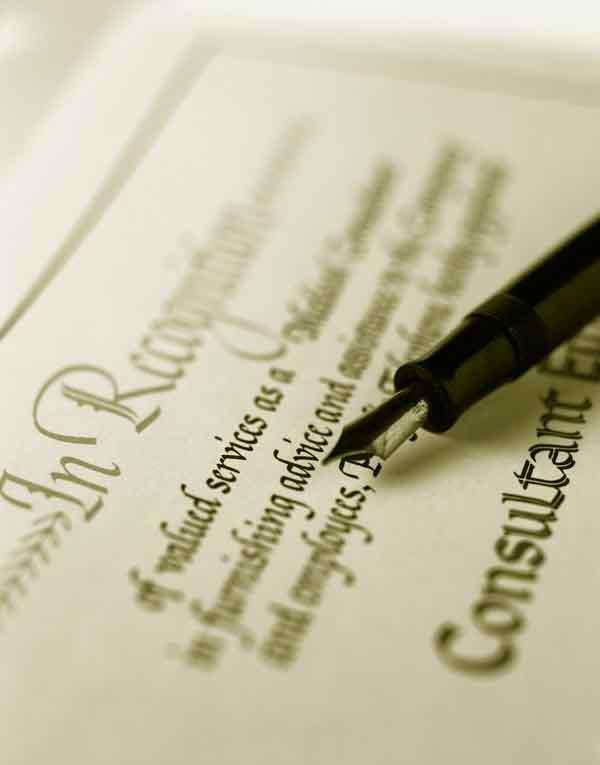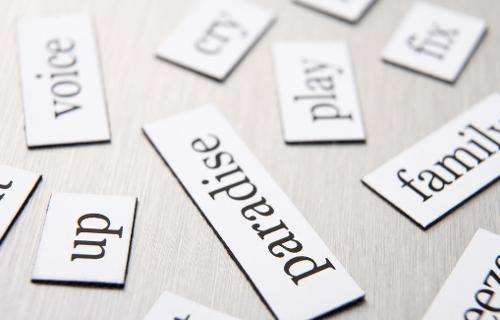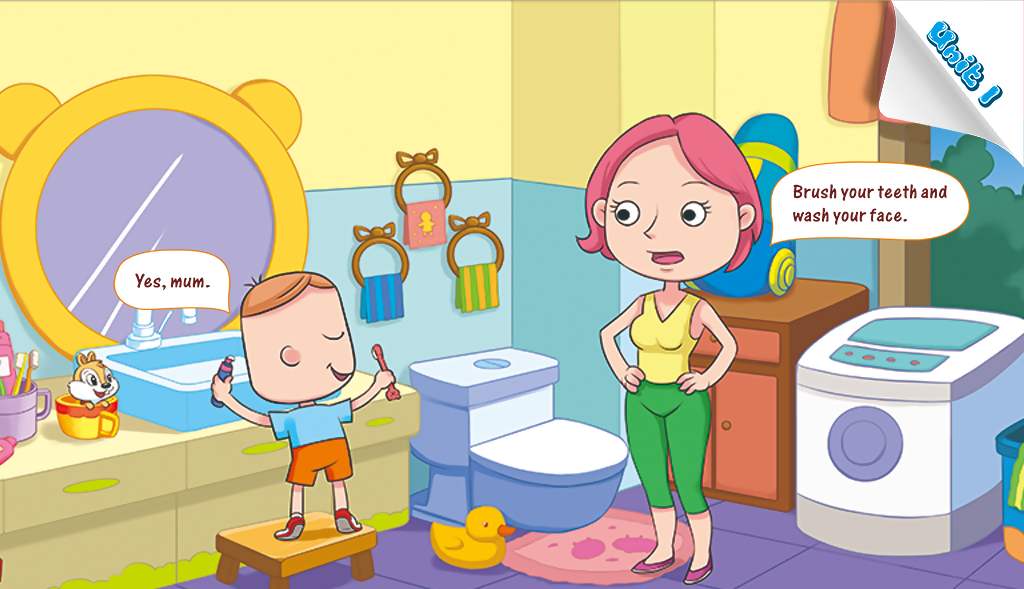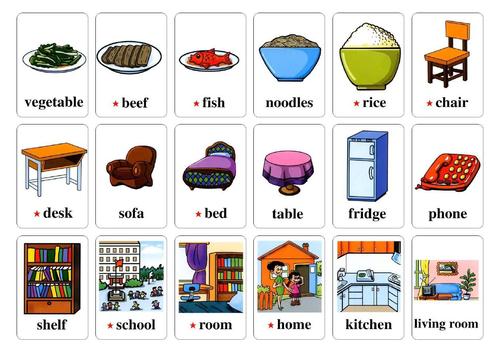人教版七年级上册英语知识点三篇
发展为了人民,发展依靠人民,发展成果由人民共享。下面是课件网小编为您推荐人教版七年级上册英语知识点三篇。

【篇一】人教版七年级上册英语知识点
1、Unit 1 ——Unit 2
1)问候语:
Good morning/ afternoon/ evening.
How are you?---Just OK, thank you. How are you?---Not bad, thanks.
Hi! Hello!
How do you do?
2)道别用语:
Nice/ Glad to meet/ see you.(meet用于初次见面,see用于熟人间)
Nice to meet/ see you, too.
Goodbye. Byebye. Bye. See you (later/ tomorrow/ next time)! So long! Good night!
3)介绍人或者物的句型:This is...
4)Excuse me.与I'm sorry.的区别:
Excuse me.是要引起对方的注意,而I'm sorry.则是向对方道歉。
5)词组be from = come from
in English
6)当问句中问到this/ that时,回答要用it;问到these/ those时,要用they来回答。 例如: What's this in English?----It's an eraser.
What are those?----They are books.
7)对Thanks.的回答:That's OK./ You're welcome./ My pleasur.
8)look the same = have the same looks
give sth. to sb. = give sb. sth.
be like = look like
in the tree/ on the tree (树上结的、长出来的用on,否则用in)
in red(穿着红色的衣服)
in the desk(在空间范围之内)
in English(用英语)
help sb. do sth.
【篇二】人教版七年级上册英语知识点
一、48个国际音标及26个英文字母的正确书写
要熟练掌握元音和辅音,5个元音字母(a, e, i, o, u),字母的正确占格及单词间距。
二、be动词的用法
be动词有三种变形,分别是:am, is, are。记忆口诀:
“我”用am, “你”用are, is用于“他、她、它”;单数全都用is,复数全部都用are。
三、人称及人称代词的不同形式(主格和宾格)
1、三种人称:第一人称(I, we),第二人称(you, you),第三人称(he, she, it, Maria)。
2、人称代词的主格,即人称代词位于句子主语位置时的形态:I, We, You, You, He, She, It, Maria。
3、人称代词的宾格,即人称代词位于句子宾语位置时的形态:me, us, you, you, him, her, it。
4、形容词性物主代词:my, our, your, your, his, her, its, their。
5、名词性物主代词:mine, ours, yours, yours, his, hers, its, theirs。
6、反身代词:myself, ourselves, yourself, yourselves, himself, herself, itself, themselves。
四、基数词(表示数量多少的词,大致相当于代数里的自然数)
zero, one, two, three, four, five, six, seven, eight, nine, ten, eleven, twelve, thirteen, fourteen, fifteen, sixteen, seventeen, eighteen, nineteen, twenty, twenty-one, twenty-two, twenty-three,twenty-four, twenty-five, twenty-six, twenty-seven, twenty-eight, twenty-nine, thirty, forty, fifty, sixty,seventy, eighty, ninety, one hundred,one hundred and one。
五、一般疑问句及特殊疑问句
1、一般疑问句:能用Yes或No来回答的问句。一般疑问句句尾读升调。
2、特殊疑问句:不能用Yes或No来回答的问句。特殊疑问句句尾读降调。
六、可数名词变复数
可数名词变复数时,有规则变化和不规则变化两种。
1、规则变化:
1)一般情况直接在词尾加“-s ”,如:cake-cakes, bag-bags, day-days, face-faces, orange-oranges等;
2)以s, x, sh, ch结尾的词,要在词尾加“-es ”,如:bus-buses, watch-watches, box-boxes等;
3)以辅音字母加y结尾的词,变y为i再加“-es ”,如:baby-babies, country-countries, family-families等;
4)部分以f (e)结尾的词,变f (e)为“ves ”,如:knife-knives, half-halves等;
5)以o结尾的词,加“-s ”或“-es ”,如:zoo-zoos, photo-photos, tomato-tomatoes, potato-potatoes等。记忆口诀:除了“英雄”hero外,凡是能吃的,加“-es ”,不能吃的加“-s ”。
2、不规则变化:
1)改变单数名词中的元音字母:man-men, woman-women, foot-feet, tooth-teeth等;
2)单、复同形:sheep-sheep, Chinese-Chinese, Japanese-Japanese等;
3)其他形式:mouse-mice, child-children等。
七、简单句的成分及主谓一致原则
最基本构成:主语+谓语+宾语,其中谓语由动词来充当。
主谓一致原则,就是句子的谓语要始终与主语保持数量上的一致性。当主语是第三人称单数(简称“三单”)时,谓语动词也要相应变成单数形式;当主语非“三单”时,谓语动词就用原形。实意动词变“三单”的规则如下:
1)一般动词在词尾加“-s ”,如:like-likes, tell-tells, play-plays等;
2)以字母s, x,ch, sh结尾的动词加“-es ”,如:guess-guesses, teach-teaches, watch-watches等;
3)以o结尾的动词一般加“-es ”,如:do-does, go-goes等;
4)以辅音字母加y结尾的动词,先变y为i,再加“-而是”,如:fly-flies, carry-carries等;
5)have的三单形式是has。
八、冠词的用法(名词前面必须要有冠词)
冠词分为定冠词(the)和不定冠词(a, an)两种。
1、定冠词the表示“特指”,可译为“这个”、“那个”、“这些”、“那些”。
2、不定冠词a, an用来表明(可数)名词的数量是“一个”。an用于以元音开头(注意不是以元音字母开头)的单词前,a则英语非元音开头的单词前。
3、不定冠词a, an与基数词one的区别是:不定冠词不是刻意强调“数量”,而基数词则强调“数量”。
九、助动词(do, does )的用法
只有实意动词作谓语时才涉及使用助动词。以like为例:
1)当句子为肯定句时不涉及使用助动词,只涉及“主谓一致”原则。
eg : I like English a lot.
Michael likes Chinese food very much.
2)当句子为否定句时,要根据主语的人称来决定使用相应的助动词:当主语为“三单”时,要使用does;当主语为“非三单”时,用助动词原形do。例如把下列句子变否定句:
Kangkang likes math.----Kangkang doesn't like math.
They like sports.------They don't like sports.
3)当句子变疑问句时,同样要根据句子的主语来决定在句首使用Do或Does.例如下列句子变问句:
Michael likes Chinese Food.----Does Michael like Chinese food? Yes, he does./ No, he doesn't.
Jane and Helen like music.----Do Jand and Helen like music? Yes, they do./ No, they don't.
十、名词所有格
1、Kangkang's books;Tom and Helen's desk; Ann's and Maria's bikes;
2、用of表示“......的”,但要从of后往of前翻译:a book of mine(我的一本书)
3、have与of的区别:
have一般表示“主动拥有”,往往用于有生命的人或动物;无生命的物体一般不能“主动拥有”,表示所属关系时要用of。例如:
I have a new bike. She has two big eyes.
a door of the house
【篇三】人教版七年级上册英语知识点
1.写在前面的话:
英语句子句首第一个单词首字母大写。
正常英语的简单句:主语+谓语动词+其他(一个简单句有且只有一个谓语动词)
2.问候
Good morning/afternoon/evening!-Good morning/afternoon/evening!
早上好/下午好/晚上好
Good night! 晚安(晚上告别语)
-How are you? 你(身体)好吗?
-(I’m) fine/very well/I’m OK, Thank you./thanks. How are you? / And you? 我很好,谢谢。你呢?
-(I’m)fine/OK, too. 我也很好。
注意:若问家人身体怎么样:
How +be+家人?
eg.-How is your mother?
-She is fine.
3.问用英语怎么说?
-What’s this/that in English?
-It’s a/an…+单数物品 (不用 this/that 回答,用人称代词 it 回答)
l be动词作谓语动词的特殊疑问句:
-特殊疑问词+be 动词(注意人称单复数)+主语+句子其余部分?
-具体回答(人称代词):主语+be+句子其余部分 名词单数不要忘记 a/an
l Be动词 :
第一人称单数 am 第三人称单数 is
其余人称单复数 are
否定在 be 动词后面加 not,注意缩写 isn’t/aren’t /am 和 not 不缩写
疑问句把 be 动词放到主语前。
l 指示代词:this/ that
this :近指,单数 that :远指,单数 these:近指,复数 those:远指,复数
l 冠词 a/an/the
a和 an是不定冠词,只用在可数名词单数前面,表示“一”。
a 用在以辅音音素开头的单词前;
an 用在以元音音素开头的单词前。
(这里的元音音素和辅音音素是指读音,而不是指字母)。如:
a pen /pen/ 一支钢笔 (/p/为辅音音素)
an orange /’ ɒrindʒ / 一个桔子 (/ɒ /为元音音素)
the是定冠词,表示“这(个),那(个),这些,那些”, 在元音音素前读/ ei: /,在辅音音素前读/ e ə/。 它可以用在名词前,表示特指说话双方都知道的人或物,或上文提到的人或物。
eg.1) The book on the desk is mine. 桌子上的书是我的。(特指)
2) Where is the teacher? 老师在哪? (双方都知道)
3) He has a pen, the pen is black. 他有支钢笔,钢笔是黑色的。(指上文提到的事物) 注意: 可数名词单数前面一定要加限定词(冠词/形容词性物主代词/指示代词等,选其一)
4.问如何拼写?
-Spell XXX, please?/How do you spell XXX?
-A-B-C
或
-Can you spell XXX?/Do you know how to spell XXX?
- Yes, …
5.问什么颜色?
-What color is/are…? eg. What color is the book?
-It‘s…/They’re +颜色 It’s red.
颜色修饰名词时,两种用法:
颜色形容词+名词=名词+in+颜色名词 (许多颜色形容词和名词是同一个单词)
black trousers=trousers in black a green hat= a hat in green
l 人称代词主格:在句子中做主语
I
you
he/she/it
we
you
they
6.字母
AEIOU 5 个字母为元音字母 其余 21 格字母为辅音字母
7.介绍 问姓名:
-What’s your/his/her name?
-I’m/she’s /he’s XXX 或 my/his/her name is XXX
full name 全名 first/given name 名 last/family name 姓
英美人的姓名与中国人的姓名顺序相反,名在前,姓在后。 如 Jim Green, 名是 Jim,姓是 Green。
-Is he Jack? 他是杰克吗?
-Yes, he is. 是的,他是。
No, he isn’t. His name’s Mike. 不,他不是。他的名字叫迈克。
Nice to meet you
Nice to meet you, too (初次见面用语)
l Be动词做谓语动词的一般疑问句(yes/no回答的问题)
-Be 动词+主语+其他?
-Yes, 主语+be. /No, 主语+be+not.
l 形容词物主代词: 表示物体的所属,必须放在名词前面,相当于形容词,在句中作定语,后面一定要跟名词
my
your
his/her/its
our
your
their
8.问电话号码
-What’s one’s(your/his/her/Liming’s) telephone number?
-It’s xxxx
9.问谁
-Who is/are…this/that/these/those..(who’s/who’re)
-She is/he is/they are XXX
10.介绍他人
This / That is...这/那位是......
These / Those are...这/那些是......
This is my friend Jane.这(位)是我的朋友简 That is my grandfather. 那(位)是我的祖父。 These are my brothers. 这些是我的兄弟。 Those are my parents. 那些是我的父母。
l 指示代词
this / these 这/这些。一般用来指时间或空间上较近的事物。
that / those 那/那些。一般用来指时间或空间上较远的事物。
eg.
This is my friend. 复数 These are my friends. That is my brother. 复数 Those are my brothers.
11.家庭成员
family tree 家谱(家庭关系图)
Here is a photo of my family 这里有一张全家福=my family photo
Here are two photos of my family
Here are …表示“这是……;这(儿)有……”,用于介绍或引入话题,
也可用 Here is … 来表示单数的概念。(这里 be 动词单复数看 be 动词后面的名词的单复数)
eg. Here is your book. 这是你的书
l 可数名词有单复数两种形式(若可数名词的数大于 1,则名词要用复数形式)
名词的复数形式规则如下:
1) 一般情况在词尾加-s ,清辅音后读/s/,浊辅音和元音后读/z/。
如:book----books /buks/ desk---desks /desks/ bag----bags /bægz/ key----keys /ki:z/
2) 以 s, x, sh, ch,等结尾的词加-s,读/iz/.
如:bus----buses /bʌsiz/ box----boxes /bɒksiz/ fish----fishes /’fiʃiz/ watch----watches /’wɒtʃiz/
3) 以辅音字母加 y 结尾的词,变 y 为 i,再加-es。读/z/。
如:family----families,baby----babies party----parties strawberry----strawberries
4) 以 f 或 fe 结尾的词
变 f 或 fe 为 ves。读/vz/。该类词有:knife 刀,life 生命,wife 妻子,self 自己,leaf 叶子,thief
贼,half 一半,wolf 狼,等等。
直接加-s 的有:roof 房顶,belief 信念,chief 首领,gulf 海湾,proof 证据 两种都可以的有:handkerchief 手绢----handkerchiefs / handkerchieves
5) 以 o 结尾的词:
三个单词加 es,potato----potatoes,tomato----tomatoes, hero 英雄----heroes
其余加 s:photo----photos, kilo----kilos, piano----pianos
常见的不规则变化有:
man--men 男人 woman--women 女人 foot--feet 脚 mouse--mice 老鼠 child--children 孩子
deer----deer 鹿 sheep----sheep 绵羊,Chinese--- Chinese 中国人 Japanese--- Japanese 日本人
l 名词的所有格 “ ’s ”,(以 s 结尾的单词用 ’ 表示)…的… 在英语中,当我们表达“我的”“你的”“他的”时,用代词 my, your, his 等。 如果要表示“某个(些)人的”时,可以在某个(些)人后加’s 来表示所有关系
Mike 的父亲:Mike’s father, 我妈妈的名字:my mother’s name,my father’s sister is my aunt.
12. What / how about …? “……怎么样?” “……又如何呢?”, 后接名词,代词或动名词。
1)向对方提出建议或请求。例如:
How about going out for a walk? 出去散散步好吗?
What about another cake? 再吃块蛋糕好吗?
2)征询对方的看法或意见。例如:
What about her playing the violin? (你认为)她的小提琴拉的怎么样?
What about the TV play? 那个电视剧怎么样?
3) 询问天气或身体等情况。例如:
What about the weather in your home town? 你们家乡的气候如何?
How about your uncle now? You can’t leave him by himself. 你叔叔近来身体好吗?你们不能单独 让他生活。
4) 寒暄时用作承接上下文的转折语。例如:
I am from Beijing. What about you? 我是北京人,你呢?
5) 对所陈述的情况做出反诘,常给予对方一种暗示。例如:
——My memory is good. I’ve never forgotten anything.
我的记忆力很好,从不忘记什么。
——What about that time you left your key to the office at home?
m 那次你将办公室的钥匙忘在家里算是怎么回事呀?
13.问物品的所属(一般疑问句的形式)
-Is this/that +one’s +物品单数
-Are these/those+one’s +物品复数
-Yes,it is/they are (回答时用代词)
-No, it isn’t/they aren’t. It is/They are +名词性物主代词/名词所属格
l 名词性物主代词: 相当于名词(即指代名词,后面不能再加名词)=形容词性的物主代词+名词(名词在前面已经 出现过)(单独使用)
mine
yours
his/hers/its
ours
yours
theirs
14.失物招领/寻物启事 lost and found
动词后面跟人称代词的宾格 eg. find it/call me
l 人称代词宾格:放在动词(call/ask/want/find)后面/介词(in/on/at)后面,做宾语
me
you
him/her/it
us
you
them
15.表示谢意
thanks / thank you for...因......而感谢
for 是介词,后接 n. / pron. / v-ing. (介词:后面加名词/动词的 doing 形式/代词)
eg. Thanks for the photo of your family. 谢谢你的全家福照片。
Thanks for helping me. 谢谢你帮助我。
Thank you for your help. 谢谢你的帮助。
如何用英语表示感谢:
It‘s very kind of you. 你太好了,多谢你了。
Thank you. 谢谢你。
Thank you very much. 非常感谢。
Thank you very much indeed. 真是太感谢你了。
Thanks. 谢谢。
Thanks a lot. 多谢。
Thanks very much. 非常感谢。 Thanks so much. 非常感谢。 Many thanks. 多谢。
回答感谢的常用答语:
Not at all. 别客气;不用谢;哪儿的话。
You are welcome. 不用谢。
That‘s all right. 没什么;不用谢。
That‘s OK. 没什么;不用谢。
Please don‘t mention it. 不用客气;不用谢。 It‘s [It was] a pleasure. 不用客气;不用谢。 A pleasure. 不用客气;不用谢。
It is (was) my pleasure. 别客气,这是我高兴做的。
My pleasure. 不客气,这是我高兴做的事。
No problem. 不客气;不用谢。
It‘s [It was] nothing. 没什么;不客气。


